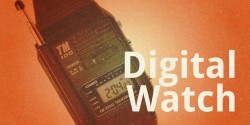On Tuesday AT&T, the nation’s second largest wireless carrier, announced that it is activating the FM radio chips on Android smartphones subscribed to its service. Beginning in 2016, subscribers buying new compatible phones will be able to use the free NextRadio app to listen to both terrestrial broadcasts and those stations’ internet streams.
Sprint, the fourth largest carrier, was the first US carrier to support FM in smartphones, beginning in 2013. Still missing from the FM team are the country’s number one and number three carriers, Verizon and T-Mobile.
Since most Android smartphone manufacturers include an FM receiver chip in their devices by default, the issues has always been whether or not the carrier that sells the phone specifies it should be activated. That means that most Android smartphone users in the US have had FM radios on their phones that are rendered useless by their service provider.
By comparison, the small percentage of Americans who buy unlocked Android phones rather than buying discounted ones that are tied to their wireless contract, have mostly been able to use the radios in their devices. And in Europe, where carrier-tied phones are much less common, FM radios have been turned on by default for years.
The US wireless carriers’ refusal to activate the FM radios in smartphones has always been kind of a mystery, since the cost to the carriers is next to nothing. The only conceivable reason why the carriers keep the radios turned off is because that forces customers to use wireless data to listen to streaming radio, which is something they can charge for.
I’ve had smartphones with FM radios in them and have always been a fan not only because the radio doesn’t use any expensive data, but it also uses a lot less battery power than keeping a constant internet audio stream going. It also means when traveling I don’t need to bring a separate radio. When I’ve been overseas and without a local data plan I can still get some local information and entertainment, for free.
It’s not yet known what caused AT&T to have a change of heart. The 2013 deal between Emmis Communication–the company behind NextRadio–and Sprint required the radio company to give $15 million a year in advertising industry to the carrier, along with a 30% share of any ad revenue generated by the NextRadio app. It wouldn’t be surprising if AT&T got a similar deal. AT&T also likely wants to head off any FCC or Congressional mandates regarding the FM chip, even though FCC Chairman Wheeler has said he prefers the wireless and radio industries to work it out themselves. Perhaps, then, the Commission helped to grease the skids a little.
iPhone users, however, are still out of luck, no matter which carrier they use. Although long rumored, there is no evidence or acknowledgement that Apple has ever included



